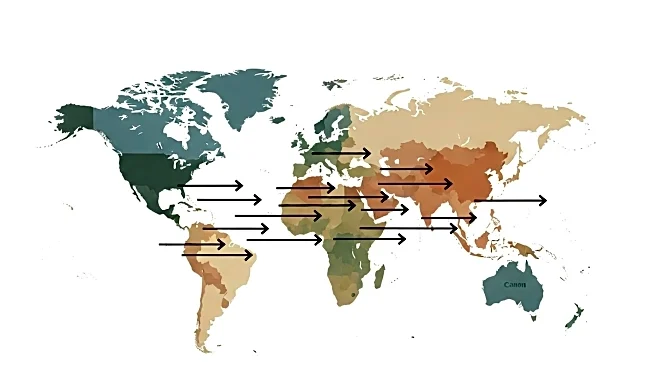What's Happening?
A recent study conducted by Penn State researchers, published in Nature Communications, has provided new insights into the spread of farming during the Neolithic Revolution. The research combined ancient DNA analysis, archaeological records, and computer simulations to determine that farming primarily spread through human migration rather than cultural adoption. The study analyzed DNA from 618 Neolithic individuals across Europe, revealing that the movement of farming populations was the main driver of agricultural expansion. Cultural diffusion, or the transfer of farming practices without migration, played a minimal role, contributing only about 0.5 percent to the spread of farming.
Why It's Important?
This research is significant as it challenges previous assumptions about the spread of farming and highlights the role of migration in shaping human history. The findings suggest that the genetic makeup of modern Europeans was significantly influenced by the migration of early farmers, rather than the adoption of farming practices by local hunter-gatherers. This has implications for understanding the genetic diversity and ancestry of European populations today. Additionally, the study underscores the importance of interdisciplinary approaches in uncovering historical developments, combining archaeology, genetics, and computational modeling to provide a comprehensive view of past human activities.
What's Next?
The study opens avenues for further research into the social dynamics of early farming communities and their interactions with hunter-gatherer groups. Future studies may explore the genetic traits introduced by migrating farmers and their impact on modern populations. Researchers might also investigate the cultural and social structures that facilitated or hindered the integration of different groups during the Neolithic period. These insights could contribute to broader discussions on migration, cultural exchange, and the development of human societies.
Beyond the Headlines
The findings highlight the strict social boundaries that existed between early farming communities and hunter-gatherers, with minimal intermarriage between the groups. This suggests that cultural and genetic exchange was limited, despite geographical proximity. The study also illustrates how migration can lead to significant cultural and genetic shifts, influencing the development of societies over time. Understanding these dynamics can provide valuable lessons for contemporary discussions on migration and cultural integration.












